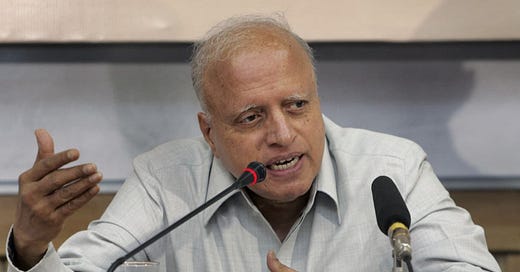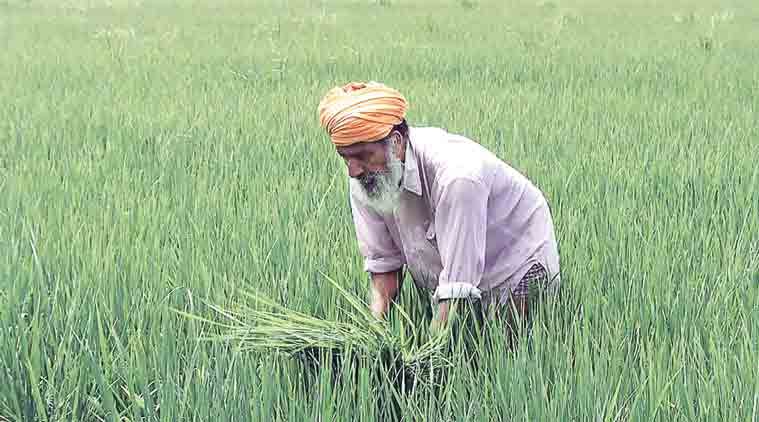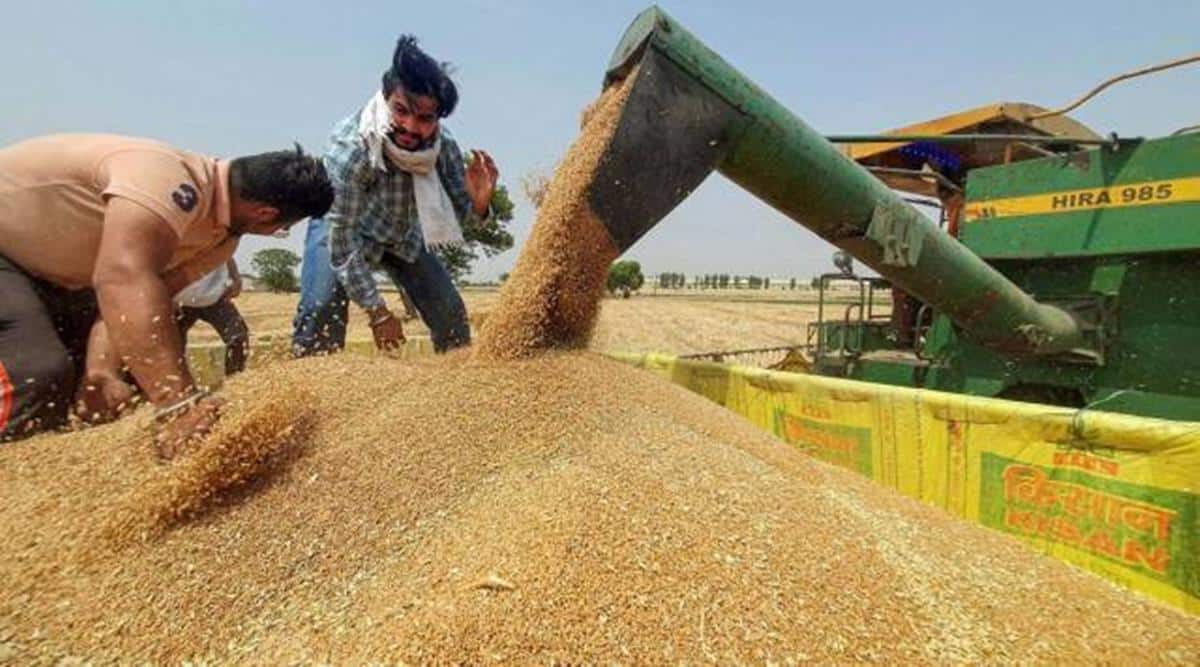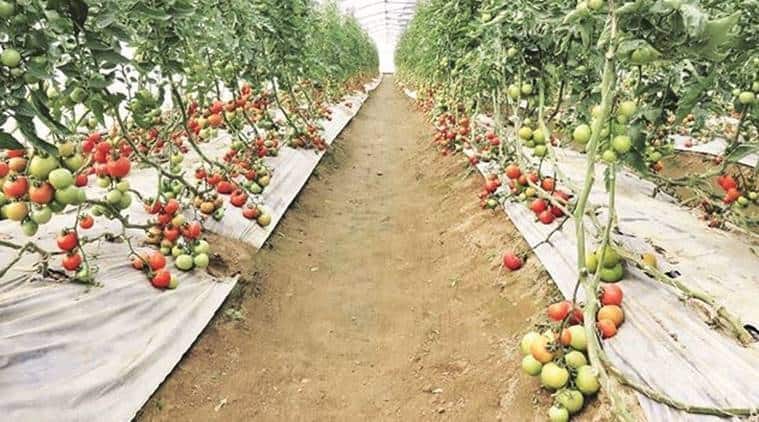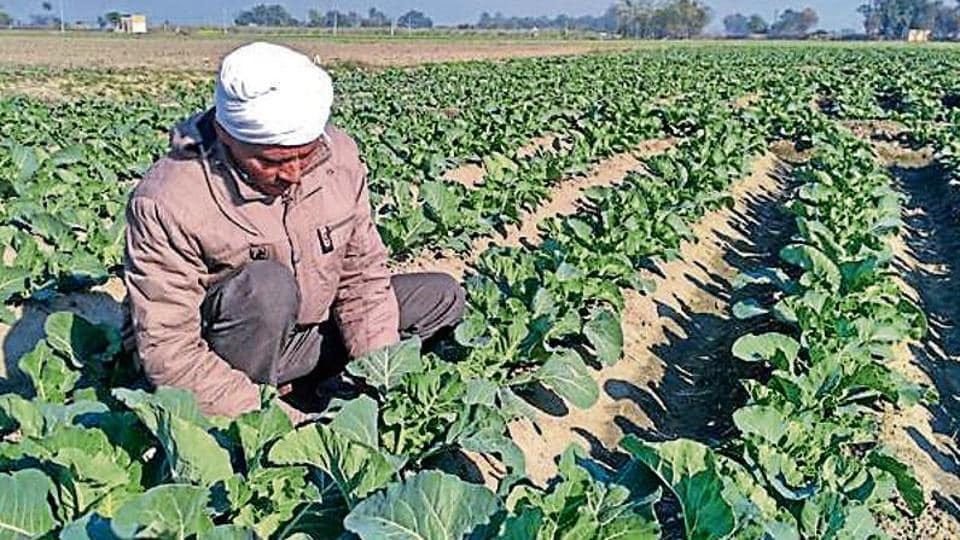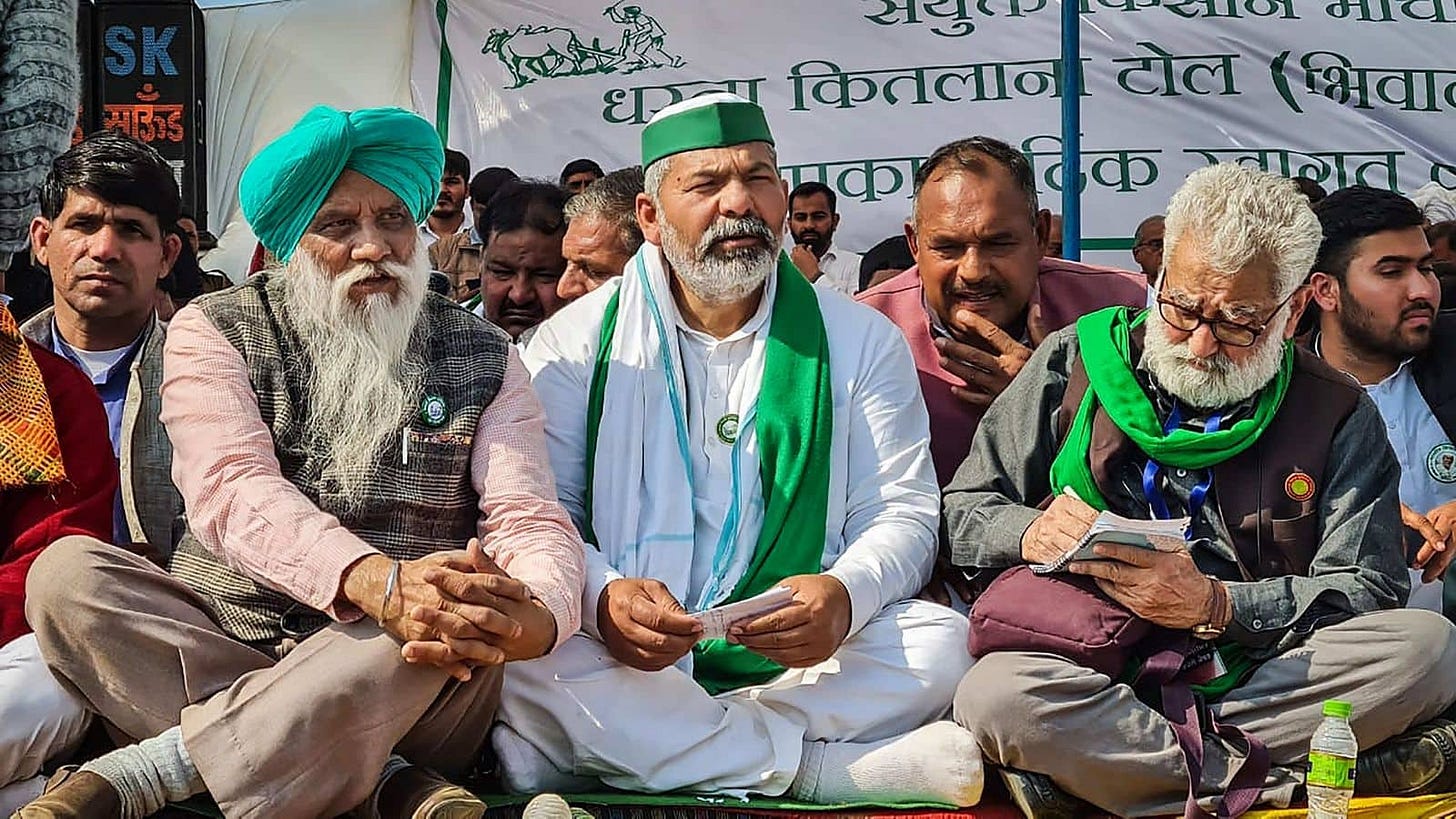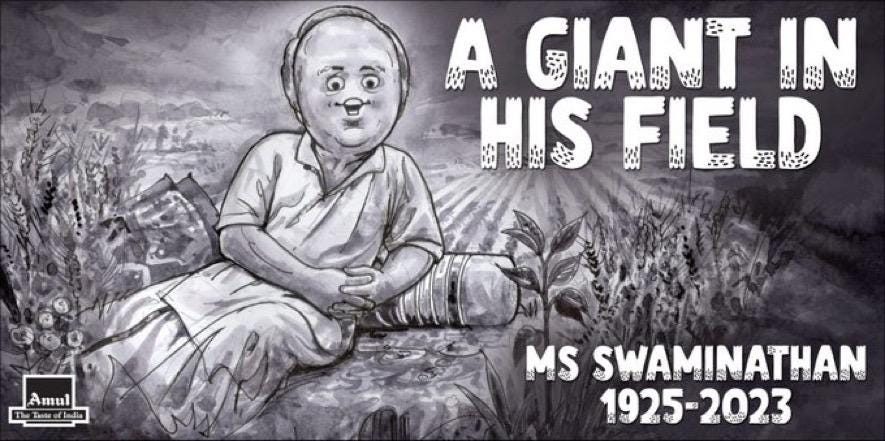Dr. M.S. Swaminathan: Not "Bharat Ratna", let "Bharat Navrachna" be his True Legacy
Dr. M.S. Swaminathan: The Architect of India's Green Revolution and the Vision and Implementation a New Agricultural Paradigm would be the best tribute to him
Bharat Ratna, Dr. M. S. Swaminathan
On the day the Government of India posthumously conferred the Bharat Ratna on the architect of India's Green Revolution, we revisit the article we published shortly after his passing on 28th September at the age of 98.
While we commend the awarding of this highest civilian honour, we reiterate that he stands tall among the other illustrious recipients and deserves to be bestowed with the "Bharat Navrachna" award.
Dr. M.S. Swaminathan: The Architect of India's Green Revolution
Introduction
The passing of Dr. M.S. Swaminathan has led to a resurgence of interest in his transformative contributions to Indian agriculture. Renowned as the 'Father of the Green Revolution,' his groundbreaking research in high-yield varieties of wheat and paddy in the 1960s and 1970s dramatically increased food grain production. This freed India from the clutches of foreign dependencies and achieved a level of self-sufficiency in food production. It's crucial to note that even today, large swathes of India lack assured means of irrigation, and monsoon failures can still make the country vulnerable to food shortages, if not outright famines.
Dr. Swaminathan's influence extends beyond the fields and into policy corridors. In 2006, through the National Commission on Farmers, he made the bold suggestion that the Minimum Support Price (MSP) for farmers should be set at 50% above the cost of cultivation. This pathbreaking recommendation has been the cornerstone of negotiations between various farmers' organisations and successive central governments, shaping the discourse around MSP for nearly two decades. This article examines Dr. Swaminathan's indelible legacy and the possible realisation of the comprehensive vision he set forth for Indian agriculture.
The Green Revolution: A Transformational Milestone
Dr. Swaminathan's groundbreaking research and efforts during the pivotal years of the 1960s and 1970s served as a catalyst in reshaping Indian agriculture. His seminal work in developing high-yield varieties of wheat and paddy not only placed India firmly on the global agricultural map but also provided an effective antidote to the famines that had plagued the nation. Achieving food self-sufficiency, India transitioned from a famine-stricken country to one that could ensure its own food security. This transformation was so profound that it freed India from the clutches of foreign dependency for food, thereby strengthening its position on the world stage.
Points of Contention
Despite its transformative impact, the Green Revolution has its critics who point out associated environmental and social challenges. These include soil degradation and water depletion due to the intensive cultivation of select crops, mainly wheat and paddy. There's also the argument that the larger-scale farmers reaped more benefits than their smaller counterparts, raising questions about the equitable distribution of gains.
Our view
While these criticisms hold water to a certain extent, it's crucial to understand the historical context. In the absence of the Green Revolution, independent India might well have been stuck in a cycle of famines similar to those experienced under the British Raj, costing millions of lives. Thus, the Green Revolution was a necessary step for the country at that time, providing a base level of food security upon which further advancements could be built. Concerns about sustainability and environmental degradation, while valid, can and should be addressed in the current context, particularly now that India has achieved a measure of food self-sufficiency and maintains buffer stocks.
The 50% Profit Margin: A Vision Unfulfilled?
Through the National Commission on Farmers, chaired by Dr. Swaminathan, a groundbreaking recommendation was made that the Minimum Support Price (MSP) should be at least 50% above the cost of cultivation for farmers. This was a visionary proposal aimed at ensuring a decent standard of living for farmers by providing them with a fair and reasonable profit margin over their investment. However, despite the assertion of successive Indian government that this landmark recommendation has been fully implemented, a closer examination reveals a more complex and nuanced reality.
Complications in Calculations and Implementation
There are multiple methods to calculate the cost of cultivation, each yielding different results, thereby affecting the MSP. These methods include the A2 (actual paid-out cost), A2+FL (actual paid-out cost plus imputed value of family labour), and C2 (comprehensive cost) models. The diversity of these models can create disparities in the implementation of MSP across various states, thereby making a singular, uniform MSP somewhat inappropriate, especially for states like Punjab where the cost of cultivation is relatively high.
Transparency and Implementation
Furthermore, transparency is crucial for the effective implementation of Dr. Swaminathan's vision. While the notion of an MSP that is 50% above the cost of cultivation sounds straightforward, the reality is fraught with opaque calculations and bureaucratic intricacies. Farmers, therefore, not only need to receive an MSP that meets the recommendation but also require the methodology behind these calculations to be transparent and easily understandable.
Thus, while the government claims to have implemented the 50% profit margin above the cost of cultivation as part of MSP, the nuances in calculation methods and lack of complete transparency suggest that the promise is yet to be fully realised.
The Way Forward: A Comprehensive Approach
State-specific MSP Package
States like Punjab not only have higher operational and labour costs but also have made substantial investments in agricultural marketing infrastructure. Given these additional expenses and investments, a standardised MSP does not suffice; Punjab and similar states require a more elevated MSP to genuinely cover the costs of cultivation and provide a fair profit margin to the farmers.
Bring in other efficiencies
However, focusing solely on MSP as the panacea for agricultural challenges would be shortsighted. A well-rounded strategy must also aim at significantly reducing post-harvest losses, which are currently a drain on both farmer incomes and overall food security. Innovations and investments in modern, efficient storage facilities are urgently needed to preserve the quality of agricultural produce, maximise its shelf life, and thereby enhance farmers' earning potential.
Thus, while MSP is an essential component of agricultural policy, it must be part of a broader strategy that also addresses other critical elements like post-harvest management and storage solutions. This multi-pronged approach is particularly crucial for states like Punjab, which have unique challenges and opportunities owing to their advanced agricultural systems.
Towards a Second Green Revolution
Expanding the Agricultural Portfolio
While the original Green Revolution emphasised the production of staples like wheat and rice, the next chapter in Indian agriculture should include a broader spectrum of crops. Comprehensive policy support is essential not just for traditional cereals but also for oilseeds and pulses. These crops not only diversify farmers' sources of income but also contribute to soil health and sustainable farming practices. Robust support in terms of Minimum Support Prices, provision of high-quality seeds, and agricultural extension services can catalyse a second Green Revolution focussed on these neglected yet vital crops.
Agri-infrastructure and Cold Chains
Moreover, there is a compelling need for a parallel thrust in horticulture. With the changing dietary habits and increasing global demand for fruits and vegetables, horticulture presents an untapped opportunity for farmers. However, success in this sector requires investment in cold chain logistics, which could serve as a linchpin for opening up markets, both domestically and internationally. The development of an efficient and sustainable cold chain network can drastically reduce post-harvest losses, ensure quality maintenance, and widen the reach of Indian horticultural produce.
Therefore, an integrated approach that combines elevated MSPs for a wider range of crops with infrastructural improvements can not only make Indian agriculture more resilient but also expand its scope, thus unlocking new economic opportunities for farmers. This diversified agricultural landscape would be a fitting progression, building upon the foundations laid by visionaries like Dr. M.S. Swaminathan.
Millets: From Subsistence to Superfoods
One of the most remarkable developments in recent years is the resurgence of traditional cereals like millets, jawar (sorghum), and bajra (pearl millet). Once stigmatised as the 'poor man's food,' these grains are now celebrated for their nutritional benefits and have found their way into the urban health-food market. Rich in fibre, vitamins, and minerals, these grains are not just nutritional powerhouses but are also well-adapted to grow in arid and semi-arid regions, making them particularly relevant for sustainable agriculture in a changing climate.
The elevation of these traditional cereals from mere subsistence crops to sought-after superfoods offers a valuable lesson. With appropriate policy support, these grains could become a significant part of India's agricultural portfolio, serving dual purposes of improving farmer incomes and enhancing nutritional security. Moreover, given their lower water requirements compared to paddy and wheat, promoting these crops aligns well with the need for more sustainable agricultural practices.
The renewed interest in these cereals signifies a broadening of perspectives in agriculture, reflecting a more holistic approach to food security and health. Their comeback serves as a testament to the versatility and adaptability of Indian agriculture and offers a way forward that could reconcile economic, nutritional, and environmental goals. This resurgence also aligns with the principles that luminaries like Dr. M.S. Swaminathan advocated—diversifying agricultural practices for a more sustainable and equitable future.
The Farmers' Agitation and Agricultural Indebtedness
The recent wave of farmers' protests across India, particularly in agriculturally dominant states like Punjab, has refocused national attention on the Minimum Support Price (MSP) and its critical role in agriculture. While the clamour to institutionalise MSP as a statutory requirement is compelling, it’s important to recognise that this single measure is unlikely to serve as a panacea for the labyrinthine challenges that beset the agricultural sector.
The fervent discussions around MSP often overshadow other pivotal issues such as agricultural indebtedness, an endemic problem that pushes farmers into a cycle of perpetual poverty. Crop failures, limited access to credit, and unaffordable high-interest loans are among the contributing factors that entrench this cycle of debt. Agricultural indebtedness is a complex problem rooted not only in economic dynamics but also in social and structural factors, including land ownership and access to resources.
Would Statutory MSP Solve the Problem?
Moreover, the issue of MSP also intersects with the state of agricultural infrastructure. States like Punjab, which have invested significantly in marketing and post-harvest facilities, naturally advocate for a higher MSP to cover these operational costs. Yet, MSP in itself does not solve the challenges related to storage, wastage, and supply chain inefficiencies that exacerbate farmers' financial vulnerabilities.
Therefore, while the push for statutory MSP addresses an immediate and pressing concern, a more comprehensive and multi-dimensional strategy is imperative for sustainable growth and stability in the sector. This would encompass improved credit facilities, modernisation of storage and transport logistics, investment in water-saving technologies, and diversification into sustainable and high-value crops.
In light of these complexities, the farmers' agitation serves as a potent reminder that agricultural reform in India must be nuanced and multifaceted, capable of addressing the myriad challenges that go beyond the MSP discourse.
The Imperative for Comprehensive Agricultural Reforms
The agriculture sector, the backbone of India's economy and livelihood for a significant population, calls for a multi-pronged, nuanced approach to reform rather than a myopic focus on singular issues like MSP. The sector's challenges are multifaceted, interrelated, and often deeply rooted in historical, social, and economic contexts.
Agricultural Credit
Moreover, the credit architecture in rural India requires robust reforms. The existing credit systems are often inadequate and mired in red tape, forcing many farmers into the clutches of private money lenders who charge exorbitant interest rates. Improving the rural credit ecosystem by promoting institutional lending and introducing more flexible, farmer-friendly loan schemes would go a long way in alleviating financial stress on the agricultural community.
Other reforms
While MSP and credit access are key components, they should be part of a broader reform package that addresses other critical issues such as land tenure, water management, crop diversification, and technological modernisation. Each of these elements interacts in complex ways to influence agricultural productivity and farmers' livelihoods.
Value-added Agriculture
The conversation around reforms must also include discussions on value-added agriculture, like food processing, and investment in rural infrastructure such as cold storage facilities and efficient transportation systems. These investments not only aid in reducing post-harvest losses but also ensure better price realisation for farmers.
In summary, tackling the complexities of India's agriculture sector necessitates a comprehensive strategy that moves beyond individual issues to embrace an integrated approach. This is crucial for the sustainable growth, prosperity, and long-term resilience of both the agricultural community and the nation at large.
Conclusion: Food Security as the Bedrock of National Security
In today's volatile geopolitical environment, where regional tensions can instantaneously disrupt vital food supply chains, the concept of food security ascends to the level of national security. It is a linchpin upon which the stability and resilience of a nation rest. As we navigate these complex dynamics, the necessity for a food self-sufficient India becomes a non-negotiable goal.
In this context, implementing Dr. M.S. Swaminathan's sage recommendations, not just in letter but in spirit, becomes a matter of both strategic and moral imperative. It is essential that these be carried out in a transparent, accountable, and timely manner to ensure the sustainability and resilience of Indian agriculture for future generations.
While accolades and posthumous awards may serve to recognise Dr. Swaminathan's monumental contributions to Indian agriculture, the most enduring tribute would be the comprehensive and faithful implementation of his visionary blueprint for a sustainable and equitable farming sector. In doing so, we would not only bolster our national food security but also lay the groundwork for a resilient and fair agricultural landscape, equipped for sustained growth. This would synergise well with Prime Minister Narendra Modi's ambitious but critically important objective of substantially elevating farmers' incomes within a realistic and achievable timeframe. By aligning these two visions, India can work towards a future that honours its agricultural past while optimising its potential for advancement.
As the custodians of Dr. Swaminathan's groundbreaking vision, the onus falls squarely on our shoulders to manifest these principles into tangible realities. Doing so would be the ultimate homage to a man who left an indelible mark on India's agricultural landscape. While the "Bharat Ratna" might commemorate his past achievements, it is the creation of a "Bharat Navrachna"—a newly sculpted India—that would truly encapsulate his enduring legacy. By translating his pioneering insights into effective action, we not only pay tribute to his monumental contributions but also forge a path for a resilient, equitable, and prosperous agrarian future for India.

